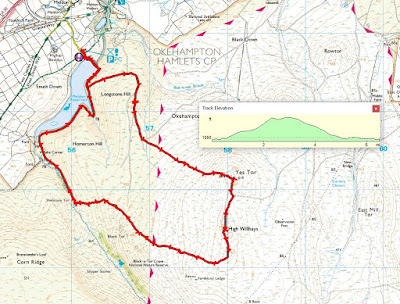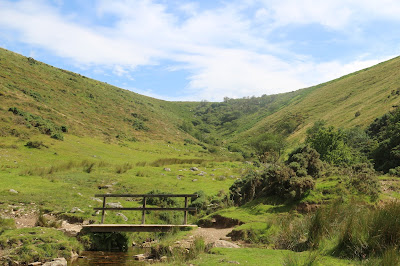 |
| Dotted here and there are circular enclosures and hut circles. Sometimes, like this one, obscured by the bracken.. |
 |
| ...And sometimes far more visible where the bracken doesn't grow. This collection comprises around 12 hut circles within a large stone enclosure. |
 |
| Highland cattle are becoming a relatively common sight on the moor. They seem to fit in with the barren landscape as if they were born to it. |


















































